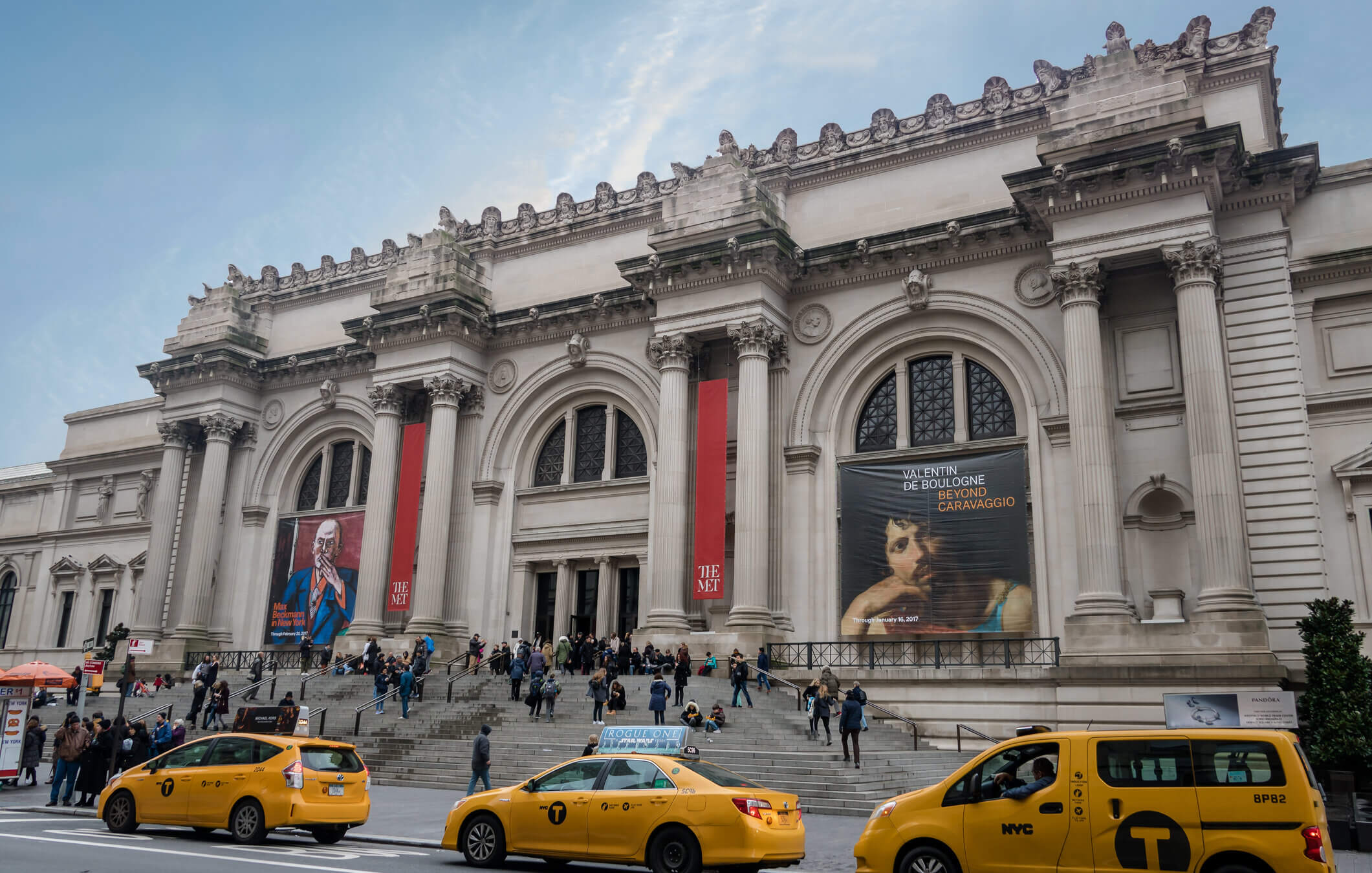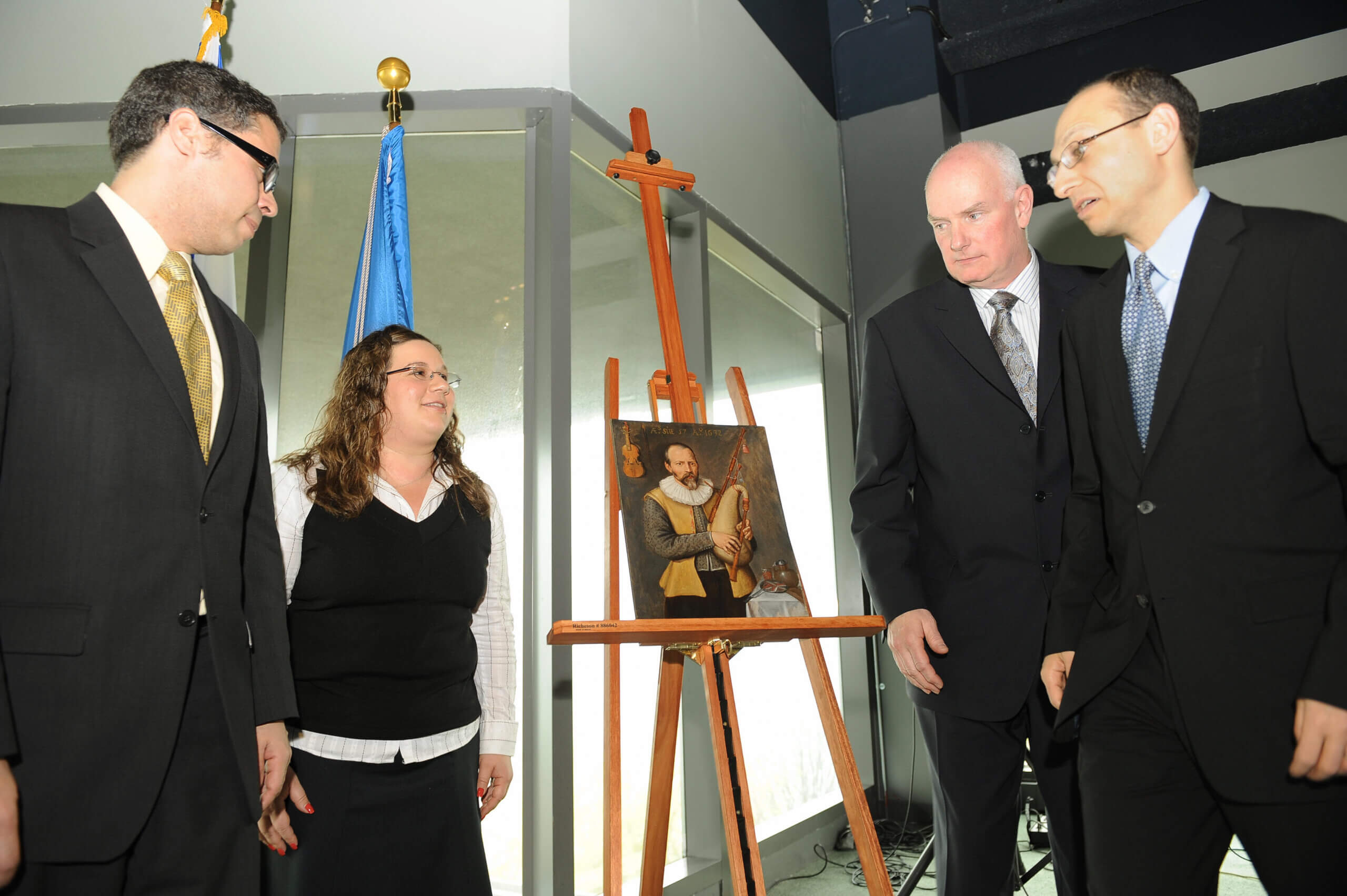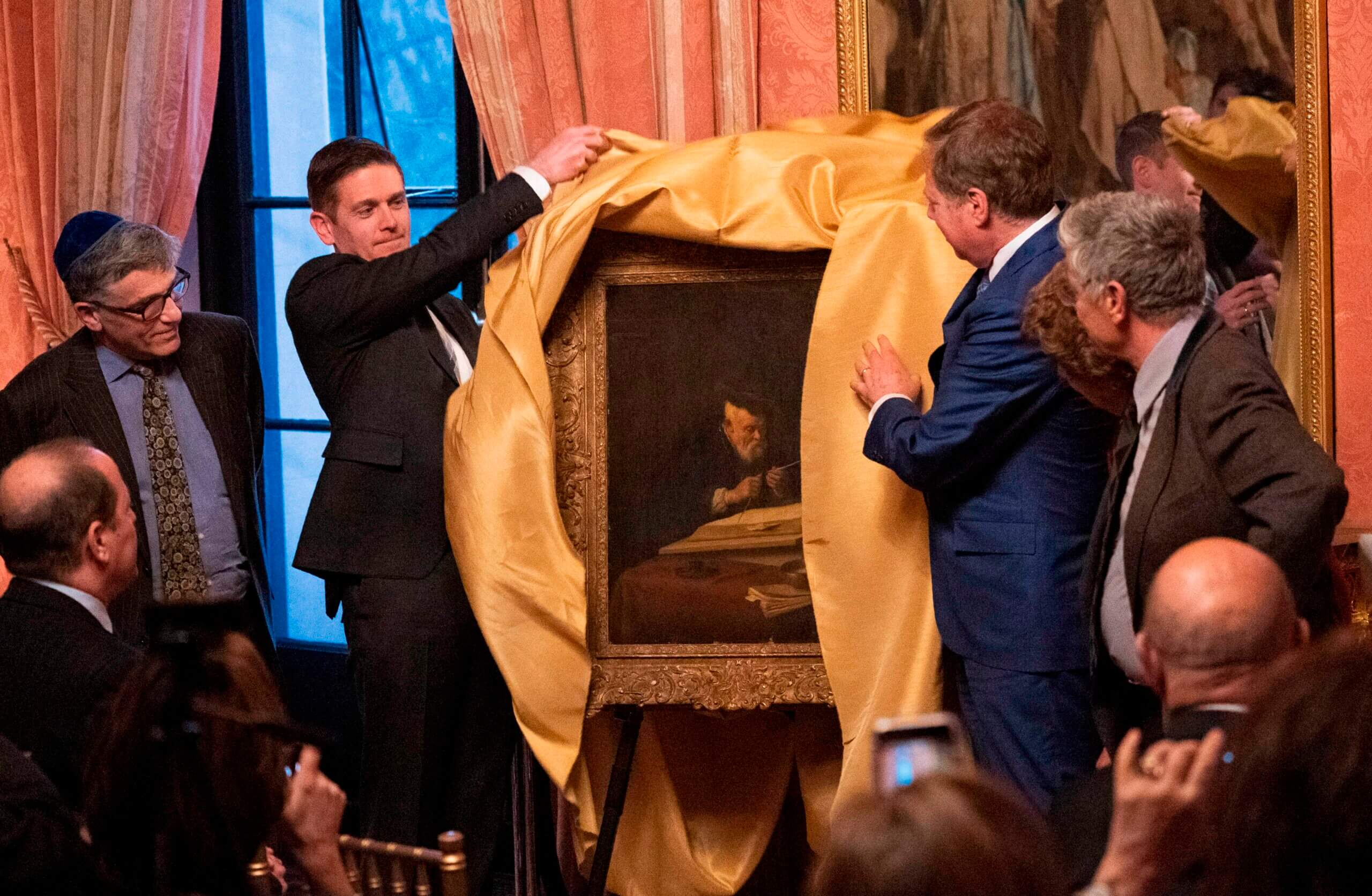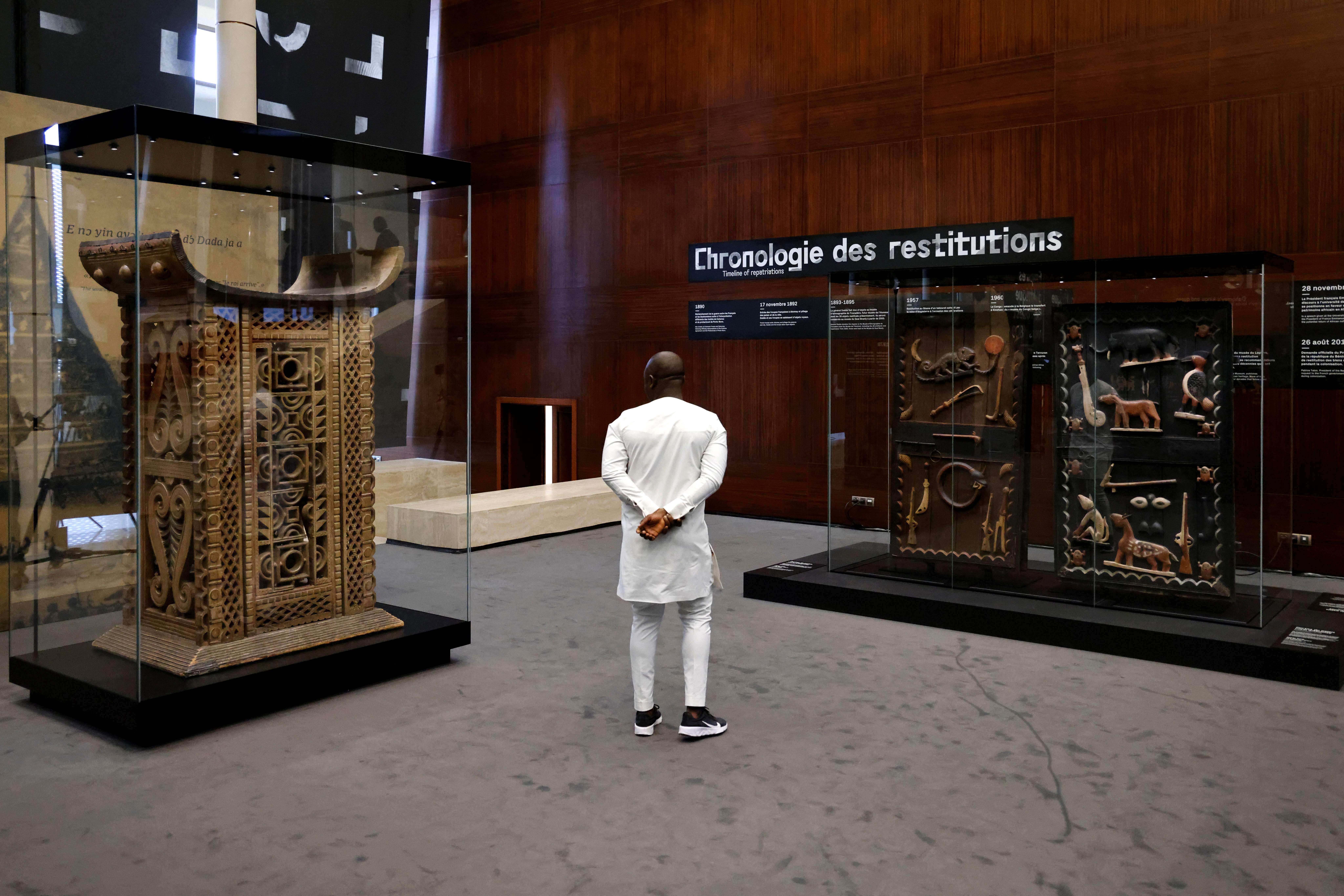New York state wants museums to label their Nazi looted art. Will anything change?
The new law aims to educate museum-goers about the history behind certain artwork. But it doesn’t account for the labyrinthine world of restitution.

Metropolitan Museum of Art in New York City Courtesy of iStock
Will the Met soon have a sign next to a Monet garden painting saying “This work was looted by the Nazis?” It may have to — last week, New York state passed a new law requiring museums to prominently label any art looted during the Holocaust, and restitution claim on the work was only settled in 2001.
Hundreds of thousands of works of art were seized or stolen from Jewish art collectors and dealers by Nazis during World War II, in part to wipe out any Jewish cultural legacy. Some of the art was sold to fund the Third Reich’s war effort, and other pieces were put into Nazi collections; some was destroyed because Hitler claimed that certain forms of art, such as abstract modernist art, were Jewish-influenced and thus degenerate.
Both during and after the war, these works trickled out into the market, to private collections and often eventually to museums. While restitution efforts since the war have managed to trace and return some of them to their original owners or their descendants, many have never been found or returned.
But the issues involving stolen art are famously labyrinthine, complicated by different countries’ jurisdictions and statutes of limitations and even sparking Supreme Court cases. Will a simple law do anything?
Enforcement
The New York State bill, sponsored by State Sen. Anna Kaplan and signed into law by Gov. Kathy Hochul is barely a paragraph long and doesn’t include any mechanism for enforcement. All it requires is that museums prominently label “identifiable works of art that were stolen during Nazi-era Europe” with “a placard or other signage acknowledging such information.”
The law also says that these requirements will only apply “to the extent practicable.” According to Jennifer Kreder, an expert in Holocaust restitution and a law professor at Northern Kentucky University, this wording could enable institutions to sidestep the law by claiming insufficient resources to research the artwork or even that there isn’t wallspace for an additional plaque. (The language was not in the initial bill proposed by Kaplan.)
The law is part of an education bill, which also includes mandates about Holocaust education in New York schools. In a statement, Kaplan said that, “it’s vital that we be transparent and ensure that anyone viewing artwork stolen by the Nazis understand where it came from and its role in history.”
“It seems to me that the primary impact of the legislation will be on the museum-going public,” Kreder told me over the phone. “So it’s a bit of an art history lesson about ownership and genocide now being placed alongside the artwork, which the public usually just views for visual stimulation.”
But provenances, or the record of an artwork’s ownership, are often hard to read for the general public, simply listing dates of sales and owners. Researchers know to read between the lines of, say, a 1939 sale in Berlin, but the average museum-goer does not, and the law does not specify how the plaques must identify the work’s history.

Historically, museums have been reluctant to put up signage and information about looted art at all.
“The actual even suggestion that something might be looted gets everybody to dig their trenches, put on their helmets and batten down the hatches,” Marc Masurovsky, the founder of the Holocaust Art Restitution Project, told me. “This paragraph sort of flies in the face of that reality, that museums, if anything, will do everything possible to not put up that kind of signage because it’s sort of a self-inflicted indictment.”
Kreder said that most museums have tended to avoid labeling looted art so as to avoid embarrassment — and the possibility of losing the piece from their collections.
Not all looted art is still in limbo; many cases have been settled and the museum has a clear right to the work. But even then, Masurovsky said that getting museums to label its background is like “pulling teeth.”
Tracing the history
The law is only about labeling — it doesn’t require museums to restitute works from their collection that were stolen during the Holocaust. And it doesn’t impact private collections. (Though Kreder pointed out that the definition of museum can be blurry.)
Still, some experts hope the law could have an impact on restitution cases because it might encourage museums to do more research into their collections.
The art world previously agreed upon a set of expectations for returning Holocaust art known as the Washington Principles. The 11 bullet points were established in 1998 and signed onto by 42 countries and several Jewish interest groups to guide procedures around looted art from the Holocaust, and include a requirement to publicize any information museums uncover about an artwork’s past. The principles were groundbreaking at the time, but also broadly defined and not binding.
Because of the Washington Principles, museums’ information on their collection’s provenance is already listed online. But provenances are also often incomplete. And museums don’t always want to do the research to expand them — in part because they don’t want to uncover the sordid history of a work of art.

“Museums don’t view the provenance research as a priority and they underfund it,” Kreder told me. Museums such as the Metropolitan Museum of Art in New York and the Museum of Fine Arts in Boston have been leaders in provenance research, but smaller collections often overlook it. And Kreder said that stricter scrutiny is applied to valuable oil paintings, while smaller pieces such as drawings often slip under the radar.
The new law might encourage museums to renew their research efforts. But Masurovsky said he saw the short bill as rehashing the Washington Principles — with even less guidance.
“We’re basically replaying the same script now,” he said. “We’re going right back to where we started, but without asking the questions. And just simply expecting something to happen without thinking of the consequences.”
Spiraling fallout
Last year, a set of Khmer lintels from Northern Thailand were returned by ICE after being displayed at the San Francisco Asian Art Museum. Museums are beginning to return Benin bronzes and Native American artifacts.
The Met is currently embroiled in a legal battle over Cambodian artifacts in its collection, which the Cambodian government says were obtained from a smuggler, while The Met insists that they were acquired legally. But the provenance is sparse, leading the Cambodian government’s lawyer to argue that the burden of proof should be on the museum to show their right to own the pieces, not on the country to prove that they were taken illegally.

Many major museums in Western Europe and the U.S. display artifacts and art from other countries, often taken by explorers during colonial regimes. These, too, are increasingly considered as looted art subject to restitution claims. But the cases remain controversial as museums fight to retain their famed collections.
Perhaps more than anything, the new New York law reflects a shift in the way we relate to art. As class, race and power comes to inform society’s understanding of the world, there’s more to consider. No longer is a work only about the artistry of the piece itself — technique, color or subject matter — but also about the life of the artwork as an object. Who owned it? What role did it play in history?
And the short paragraph that entered the New York code of law is part of that shift — whether or not anyone meant it to be.
“It’s extremely well-intentioned, but I think they walked into, basically, a shark swamp,” said Masurovsky. “I don’t know whether these state senate members really thought this out.”
















